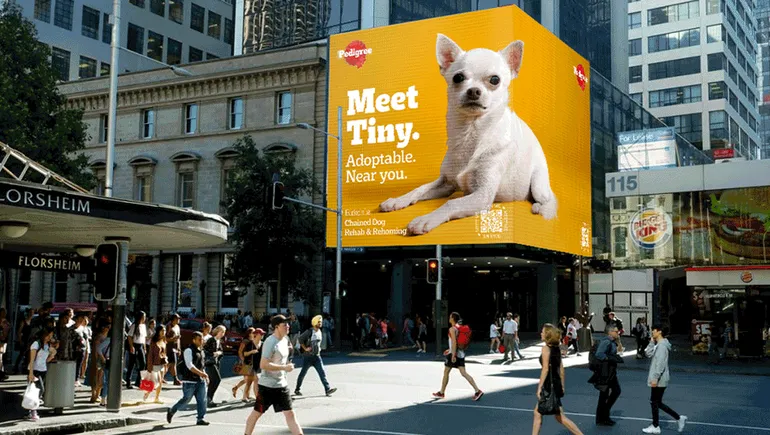
How to safeguard and grow OTT, CTV ad revenues during the pandemic
The following is a guest post from Daniel Elad, chief strategy officer at SaaS ad monetization platform TheViewPoint. Opinions are the author’s own.
The COVID-19 pandemic has disrupted every industry, including the media sector, providing both challenges and opportunities. Among widespread travel restrictions, postponed or canceled live sports events (the Tokyo Olympics, for instance), and a dense cloud of uncertainty, the global advertising industry is slowing to a crawl in some ways and swiftly pivoting in others.
When it comes to the martech industry, it’s paramount for connected TV and over-the-top (CTV/OTT) publishers to keep commerce flowing during these unprecedented times. Here’s food for thought: 53% of consumers prefer brands communicate through TV ads. On top of that, 42% of 18- to 24-year-olds want brands to communicate through online video. For CTV publishers, that could mean additional ways of monetization, but on the other hand, the economic impact of the pandemic is leading to a decline in advertising budgets.
What happens next? Can a surplus of TV and OTT consumption create new monetization opportunities for publishers?
Changing consumer behavior on CTV
Nielsen identified more than double the amount of time spent streaming content during the week of March 16 compared to the same week in 2019 in the U.S. alone. In general, people around the world are watching about 60% more content than usual, including traditional live TV, DVR recordings, video-on-demand and streaming services through any TV set, game console or connected device.
For CTV publishers, this means an opportunity to reach untapped audiences in those who consume media once in a while or families with kids that are now homeschooled.
COVID-19 and the martech industry
Coronavirus will have a bigger impact on advertising than the 2008 financial crisis. According to recent statistics by the Interactive Advertising Bureau (IAB), whilst digital ad spend is down by a third, 35% of advertisers are adjusting their in-market tactics and ramping up targeting, with a 38% lift by audience and 35% increase by OTT/CTV device.
The pandemic may spur permanent behavior changes in how people buy products, consume media and how they perceive the brands they do business with. Those changes are leading to a shift in advertisers’ and publishers’ behavior as well. Today, companies are expected to focus on marketing activities that deliver helpful services in suitable advertising environments. That can be achieved in cooperation with brands, advertisers and CTV vendors.
What should CTV publishers do to achieve success?
With all that in mind, the first thing publishers should do is to provide brands with the ability to properly advertise themselves and people with the best ways to consume those ads. Let’s analyze some practical steps to get the full picture:
-
In response to the pandemic, the launch of an ad-supported service may fit into a strategy to prioritize advertising and sales commissions on subscription services rather than strictly hardware sales. If you have a good product, running ads on it would prove to be beneficial for you, as the publisher, brands and consumers. In that way, even if the streaming consumption reduces once the pandemic subsides, the lift in CTV hardware sales could offer lasting implications to the reach and value of CTV ad inventory.
-
If you are already using ads to monetize your product, it’s critical to optimize the running and management of ad campaigns as well as adapting media strategies.
-
Publishers often work with numerous supply-side platforms (SSPs) to maximize fill rates and yields, but sometimes, this brings negative consequences. That is why transparency issues with third-party providers should be carefully examined. It’s possible to save up to 30% of ad space by cutting out third-party providers. Eliminating the middlemen could save both you and your advertiser money in the long run. This will also bring more control of ad content and the ability to monetize inventory in the best possible way.
-
Thinking outside the box and providing brands with the opportunity to be noticed is key. Advertisers must stay hungry for inventory like never before. That’s where CTV platforms offer a helping hand by leveraging creative ad formats. Think of how to implement all possible video ad formats for CTV environments. Not only will those formats catch attention, they’re also well-liked by viewers. They’re shorter but significantly more effective. More viewers could lead to higher revenue. Therefore, new formats are likely to bring better engagement, resulting in benefits for all parties involved.
-
Entertaining and engaging ad messages across all channels should be your key priority and focus. Don’t let misleading ads run on your platform.
-
Collaboration, partnership and support are even more important these days. Many brands have started to offer free or discounted products and services, such as virtual yoga class, free online events or additional weeks of educational streaming services.
The coronavirus outbreak has catapulted CTV into the spotlight. Just like in any industry, the best way to make money on CTV during the pandemic is to optimize ad campaigns and attract more ad revenue by providing advertisers with advanced ad running capabilities. New attention-grabbing formats and no middlemen are just to name a few. Provide good products, encourage marketers to think outside the box and offer them the possibilities to implement their best marketing techniques.





